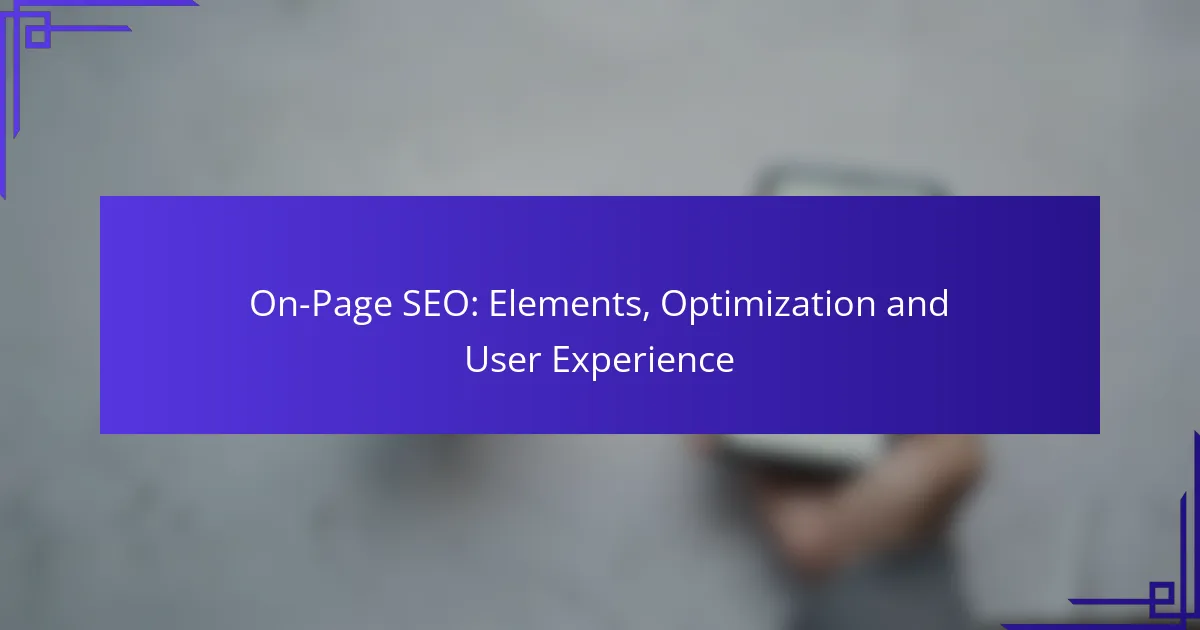On-page SEO is crucial for enhancing user experience and improving a website’s visibility in search engine results. By optimizing key elements such as title tags, meta descriptions, and content quality, website owners can create a more engaging and navigable site. A focus on user experience not only reduces bounce rates but also encourages higher engagement, signaling to search engines that the content is valuable.
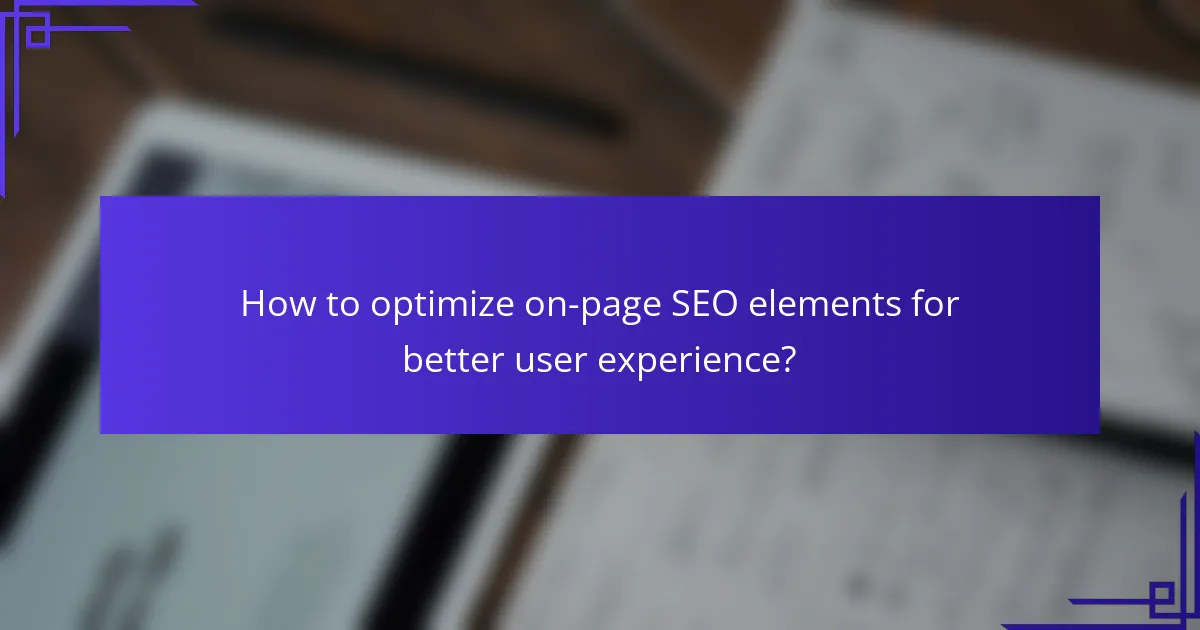
How to optimize on-page SEO elements for better user experience?
Optimizing on-page SEO elements enhances user experience by improving site navigation, content clarity, and overall engagement. Key elements include title tags, meta descriptions, header tags, image optimization, internal linking, and content quality.
Title tags and meta descriptions
Title tags and meta descriptions are crucial for both SEO and user experience. A well-crafted title tag should be concise, ideally between 50-60 characters, and include primary keywords relevant to the page content. Meta descriptions should summarize the page in 150-160 characters, enticing users to click through.
Avoid duplicating title tags and meta descriptions across multiple pages, as this can confuse search engines and users alike. Use unique, descriptive phrases that accurately reflect the content to improve click-through rates.
Header tags structure
Header tags (H1, H2, H3, etc.) help structure content for both users and search engines. The H1 tag should be used for the main title of the page, while H2 and H3 tags can organize subheadings and sections. This hierarchy improves readability and allows users to scan content easily.
Ensure that header tags include relevant keywords to enhance SEO. However, avoid keyword stuffing; headers should remain natural and informative to maintain user engagement.
Image optimization techniques
Image optimization enhances page load speed and improves user experience. Use appropriate file formats like JPEG for photographs and PNG for graphics, and compress images to reduce file size without sacrificing quality. Aim for a loading time of under 2 seconds for optimal performance.
Adding descriptive alt text to images not only aids SEO but also improves accessibility for users with visual impairments. Alt text should be concise and relevant, ideally including keywords where appropriate.
Internal linking strategies
Internal linking connects different pages within your website, enhancing navigation and distributing page authority. Use descriptive anchor text that indicates the linked page’s content, which helps both users and search engines understand the context.
Aim for a balanced internal linking structure, linking to important pages without overwhelming users. Too many links can be distracting, so prioritize links that add value to the reader’s journey.
Content quality and relevance
High-quality, relevant content is essential for user experience and SEO. Content should be informative, engaging, and tailored to the target audience’s needs. Regularly updating content keeps it fresh and relevant, which can improve rankings and user retention.
Consider using a variety of content formats, such as articles, videos, and infographics, to cater to different user preferences. Ensure that all content is well-researched and free of errors to build credibility and trust with your audience.
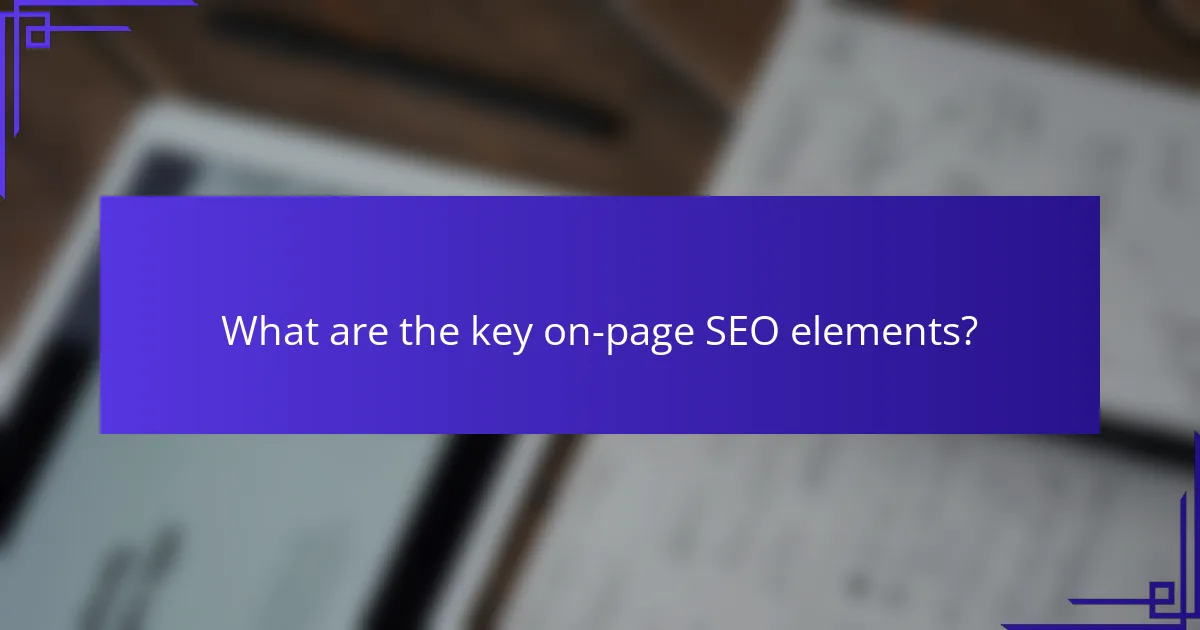
What are the key on-page SEO elements?
Key on-page SEO elements include title tags, meta descriptions, header tags, alt text for images, and URL structure. These components help search engines understand your content and improve user experience, ultimately influencing your site’s visibility and ranking.
Title tags
Title tags are HTML elements that specify the title of a webpage. They appear in search engine results and browser tabs, making them crucial for attracting clicks. A good title tag should be concise, ideally between 50-60 characters, and include relevant keywords.
To optimize title tags, place the most important keywords at the beginning and ensure they accurately reflect the page content. Avoid keyword stuffing, as it can lead to penalties from search engines.
Meta descriptions
Meta descriptions provide a brief summary of a webpage’s content, typically displayed below the title in search results. While they don’t directly impact rankings, a compelling meta description can significantly improve click-through rates. Aim for about 150-160 characters to ensure the entire description is visible.
Include relevant keywords and a clear call to action in your meta descriptions. Avoid duplicating descriptions across multiple pages to prevent confusion and ensure each page stands out in search results.
Header tags
Header tags (H1, H2, H3, etc.) structure content on a webpage, making it easier for users and search engines to read. The H1 tag is typically reserved for the main title, while H2 and H3 tags are used for subsections. Use these tags to create a logical hierarchy and improve content organization.
Incorporate keywords naturally within header tags to enhance SEO. However, prioritize readability and user experience over keyword placement to maintain engagement.
Alt text for images
Alt text describes images on a webpage, providing context for search engines and improving accessibility for visually impaired users. Effective alt text should be concise, ideally under 125 characters, and include relevant keywords when appropriate.
When writing alt text, focus on describing the image’s content and purpose rather than just listing keywords. This practice not only aids SEO but also enhances user experience.
URL structure
A well-structured URL is essential for both SEO and user experience. URLs should be short, descriptive, and include relevant keywords. Aim for a format that is easy to read and understand, typically using hyphens to separate words.
For example, a URL like www.example.com/on-page-seo is more effective than www.example.com/page123. Avoid using unnecessary parameters or numbers, as they can confuse users and search engines alike.
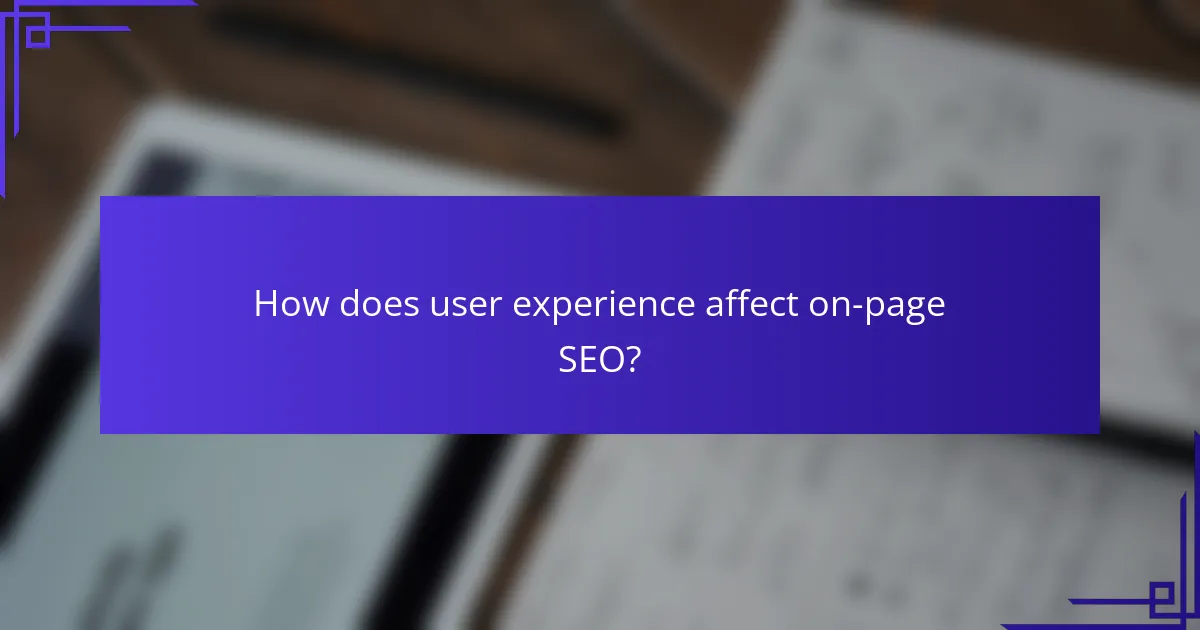
How does user experience affect on-page SEO?
User experience significantly impacts on-page SEO by influencing how visitors interact with a website. A positive user experience can lead to lower bounce rates and higher engagement, which search engines recognize as indicators of quality content.
Page load speed
Page load speed is crucial for user experience and directly affects on-page SEO rankings. Websites that load in under three seconds generally retain more visitors, while delays can lead to increased bounce rates. Aim for a load time in the low seconds range to optimize user satisfaction.
To improve load speed, consider optimizing images, leveraging browser caching, and minimizing JavaScript. Tools like Google PageSpeed Insights can help identify specific areas for enhancement.
Mobile responsiveness
Mobile responsiveness ensures that a website displays correctly on various devices, which is vital for user experience and SEO. With a significant portion of web traffic coming from mobile devices, a responsive design can enhance usability and engagement.
To achieve mobile responsiveness, use flexible layouts and scalable images. Test your site on multiple devices to ensure it maintains functionality and aesthetics across platforms.
Navigation ease
Easy navigation is essential for a positive user experience and can influence on-page SEO. When users can find information quickly, they are more likely to stay on the site longer, reducing bounce rates and improving rankings.
Implement clear menus, logical categorization, and a search function to enhance navigation. Avoid cluttered layouts and ensure that important links are easily accessible to guide users effectively.
Engagement metrics
Engagement metrics, such as time on page and click-through rates, provide insights into user experience and can impact on-page SEO. High engagement indicates that users find the content valuable, which search engines may reward with better rankings.
To boost engagement, create compelling content that encourages interaction, such as videos, infographics, or interactive elements. Regularly analyze your metrics to identify trends and adjust your strategy accordingly.
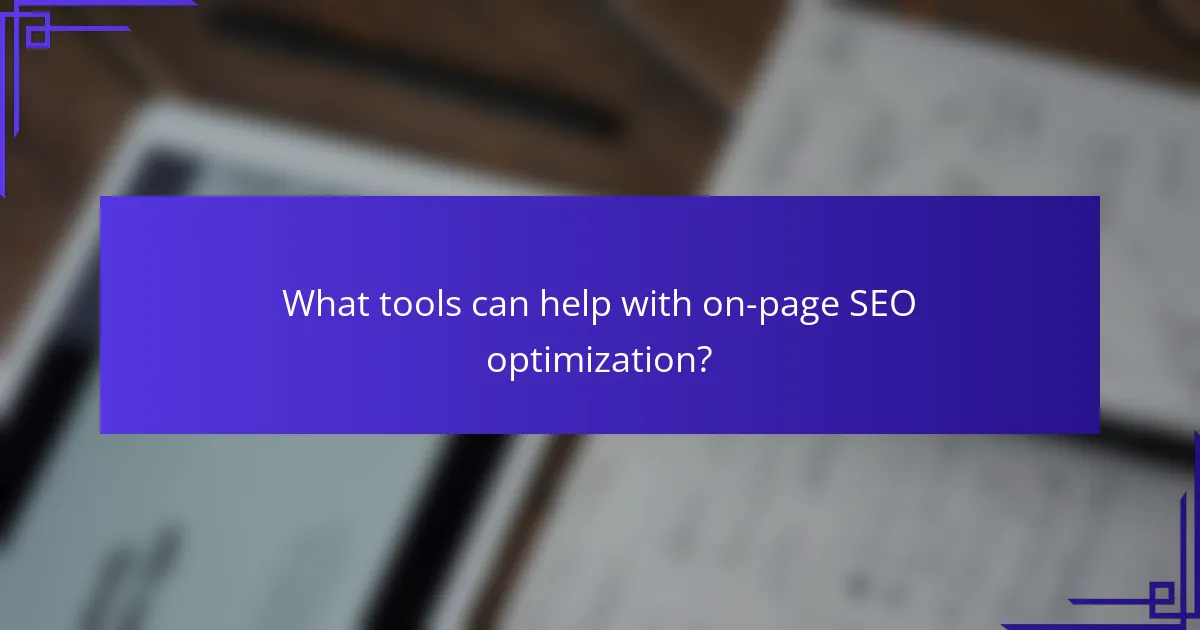
What tools can help with on-page SEO optimization?
Several tools can significantly enhance on-page SEO optimization by providing insights, tracking performance, and suggesting improvements. Utilizing these tools can streamline your optimization efforts and help ensure your website meets search engine standards.
Google Search Console
Google Search Console is a free tool that provides essential data about your website’s performance in Google search results. It allows you to monitor indexing status, optimize visibility, and identify issues affecting your site’s SEO.
Key features include performance reports, which show clicks, impressions, and average position for your pages. Regularly checking for crawl errors and mobile usability issues can help maintain your site’s health and improve user experience.
SEMrush
SEMrush is a comprehensive SEO tool that offers on-page optimization suggestions based on your competitors and industry standards. It provides a site audit feature that identifies issues like broken links, missing tags, and keyword optimization opportunities.
With SEMrush, you can analyze your content’s readability and keyword density, making it easier to align with SEO best practices. Its competitive analysis tools allow you to benchmark your performance against rivals, helping you to refine your strategies effectively.
Ahrefs
Ahrefs is known for its robust backlink analysis, but it also offers powerful on-page SEO tools. The Site Audit feature scans your website for SEO issues and provides actionable recommendations to enhance your pages.
Ahrefs’ Content Explorer allows you to find popular content in your niche, helping you understand what works. By analyzing top-performing pages, you can identify keywords and topics to target, improving your content strategy.
Yoast SEO
Yoast SEO is a popular WordPress plugin that simplifies on-page SEO for website owners. It offers real-time content analysis, helping you optimize your posts and pages for specific keywords.
With features like readability checks and suggestions for internal linking, Yoast ensures your content is both user-friendly and search engine optimized. Regularly updating the plugin can help you stay aligned with the latest SEO practices and algorithm changes.
